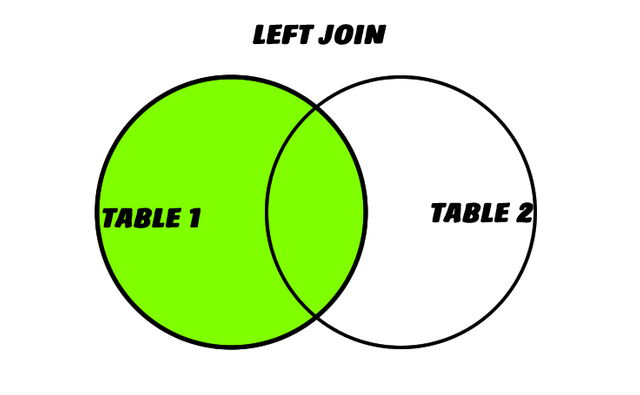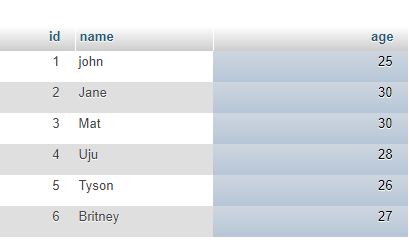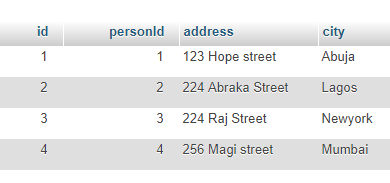Retrieving Data From 2 Tables in play 2.6.x(Scala) Using Slick: Left Join
.png)
Repository
https://github.com/playframework/playframework
What Will I Learn?
In this tutorial you will learn the following
- You will learn about the basics of cross JOIN
- You will learn about the basics of left JOIN
- You will learn How to execute a left JOIN operation
Requirements
The following are required in order to properly follow along this tutorial.
- Intellij IDEA
- sbt
- playframework with slick installed
- Web browser
- Basic knowledge of Scala programming language
Resources
- Slick website:- http://slick.lightbend.com/
- Slick repository:- https://github.com/slick/slick
- Slick License:- BSD-style license
- Gimp website:- https://www.gimp.org
- Gimp repository:- https://github.com/GNOME/gimp
- Gimp License:- GNU license
Difficulty
- Intermediate
Tutorial Contents
Welcome to today's tutorial, in the previous tutorial we looked the difference between Applicative and monadic joins, in this tutorial we will be looking at how to execute how to execute left JOIN operations in slick. This tutorial promises to be as simple as possible, but for a better understanding you are advised to visit my previous tutorial on this subject found below in the curriculum section.
Cross Join
In creating joins, we constrain the tables using the on constraint. Anytime we create a JOIN, whether it's is an inner join, outer join, left join or right join. If we omit the on constraint we end up with what is known as a cross join. Cross join just includes every row from the left table with every row on the right table.
Left Join
When a left join operation is executed all the rows of the left table is returned, even if there are no matching rows on the right table. What this simply means is that all the values of the left table plus matching values on the right table NULL in case of no matching join predicate will be returned.

In SQL the basic syntax for a left join is:
SELECT table1.column1, table2.column2
FROM table1
LEFT JOIN table2
ON table1.common_column = table2.common_column
Syntax Explanation
The basic statement for a JOIN is a
selectstatement, so we are selecting a column in table 1 and another column in table 2 which we want to display.We would first select from table 1 which is the table on the left and using the
LEFT JOINkeyword join table 2Using the
ONclause we will then match common columns in both tables.NULLis returned if there are no matching predicates.
Consider the following tables, one called people and the other called address we will attempt to display the address and name of people using common fields like id in people table and personId in the address table.
Let's write the query to join our tables together in slick, to do that we will open up our editor (in my case IntelliJ Idea) and type the following code in our model.
def leftJoin (): Future[Seq[(Person,Option[Address])]] = db.run {
people.joinLeft(addresses).on(_.id === _.personId).result
}
Code Explanation
We define a function called
leftjoin. In scala Functions are defined using thedefkeyword.We will the return a future of
Person, and another for theaddress, Since we are carrying out a join we have to return futures from both tables.Using the first table
people, which we call thejoinLeftfunction which accepts as a parameter, the second table,address.the
onclause now joins matching columns in both tables, which is theidin table 1 andpersonIdin table 2.Finally we execute our query using
resultfunction.
Next we move our controllers, where we will carry out actions for our queries, we can do that by typing the following code
def execLeftJoin = Action.async{ implicit request =>
repo.leftJoin().map {people =>
Ok(Json.toJson(people))
}
}
Code Explanation
In our controller we create a function known as
execLeftJoin, this is just a short form forexecute left joinyou can name the function as you wish.In controllers we cannot execute functions without carrying out an implicit request, in our code above we are making reference to the
PersonRepositoryclass by calling therepoobject.We call our
leftJoinfunction declared in our model. We then map it to a variable known aspeopleto allow us display as JSONto display the data as JSON we call the
toJsonfunction which accepts our array of people and address combined together aspeople.
To access our application we need to create routes, so that we can easily navigate different points of the application. So we will create routes by typing the following codes
GET /viewleftjoin controllers.PersonController.execLeftJoin
Code Explanation
we initiate a
GETrequest which is called when we append/viewleftjointo our addresslocalhost:9000.Our
GETrequest maps toexecLeftJoinfunction in thePersonControllerclass.The routes are placed in order of priority, and we will place it at the bottom of the routes, we will give high priorities to the routes that are higher up.
After we have inserted some sample data into people and address, we can then view the result of the join by typing localhost/9000/viewleftjoin
Curriculum
- Creating a user registration system in play 2.6.x (scala) using mysql
- Creating a user registration system in play 2.6.x (Scala) using mysql
- Retrieving a particular user and initiating GET requests in play 2.6.x(Scala)
- Updating a particular user in play 2.6.x using slick
- Deleting a User and sorting elements in play(Scala) 2.6.x
- Carrying out aggregations in Play(Scala) 2.6.x
- Retrieving Data From 2 Tables in play 2.6.x(Scala) Using Slick: Part 1
Proof of Work Done
Proof of work done can be found here
https://github.com/leczy642/play-scala-slick-JOIN
.png)
.png)
Thank you for your contribution.
Your contribution has been evaluated according to Utopian policies and guidelines, as well as a predefined set of questions pertaining to the category.
To view those questions and the relevant answers related to your post, click here.
Need help? Write a ticket on https://support.utopian.io/.
Chat with us on Discord.
[utopian-moderator]
Hey @leczy
Thanks for contributing on Utopian.
We’re already looking forward to your next contribution!
Contributing on Utopian
Learn how to contribute on our website or by watching this tutorial on Youtube.
Want to chat? Join us on Discord https://discord.gg/h52nFrV.
Vote for Utopian Witness!